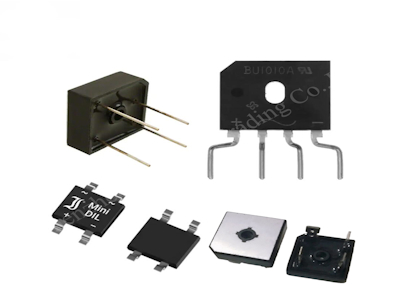В современном мире автоматизации и промышленного производства эффективное управление процессами становится ключевым фактором успеха. Одним из важнейших инструментов для этого являются реле времени, которые позволяют точно контролировать временные интервалы в различных операциях. В этой статье мы подробно рассмотрим, как правильно выбрать время реле, чтобы максимизировать эффективность ваших процессов, снизить затраты и повысить производительность. Мы обсудим типы реле, их применение, факторы выбора и лучшие практики внедрения.
Что такое реле времени и почему они важны?
Реле времени – это электронные или электромеханические устройства, предназначенные для включения или выключения электрических цепей через заданные временные интервалы. Они широко используются в промышленности, бытовой технике, системах освещения, отопления и многих других областях. Основная цель реле времени – обеспечить автоматическое управление процессами без постоянного человеческого вмешательства, что приводит к значительной экономии времени и ресурсов.
Например, в производственной линии реле времени может управлять циклом работы машины, обеспечивая точное время запуска и остановки. Это не только улучшает качество продукции, но и предотвращает перегрузки оборудования, сокращая простои и延长 срок службы. В быту реле времени используются в таймерах для освещения, что помогает экономить электроэнергию и повышать комфорт.
Важность выбора правильного времени реле невозможно переоценить. Неправильный выбор может привести к неэффективной работе системы, повышенному энергопотреблению, частым поломкам и даже аварийным ситуациям. Поэтому понимание принципов работы и критериев выбора реле времени является essential для любого инженера или менеджера, involved в управлении процессами.
Типы реле времени и их особенности
Существует несколько типов реле времени, каждый из которых подходит для specific applications. Основные типы включают электромеханические, электронные и программируемые реле.
Электромеханические реле времени являются традиционными и надежными устройствами. Они используют механические компоненты, such as пружины или моторы, для отсчета времени. Эти реле просты в использовании и обслуживании, но могут иметь ограниченную точность и диапазон настроек. Они идеально подходят для applications, где не требуется высокая точность, such as управление освещением или basic промышленные процессы.
Электронные реле времени более современны и точны. Они основаны на электронных схемах, such as микроконтроллеры или таймеры IC, и предлагают широкий диапазон настроек времени – от milliseconds до часов или даже дней. Эти реле often include дополнительные функции, such as цифровые дисплеи, программируемые задержки и связь с другими устройствами через интерфейсы like RS-485 или Ethernet. Они подходят для complex приложений, such as автоматизация производственных линий или системы управления зданиями.
Programmable реле времени (ПЛК-таймеры) являются наиболее advanced вариантом. Они integrated into программируемые логические контроллеры (ПЛК) и allow for гибкое программирование complex временных sequences. These реле can handle multiple задач simultaneously and are essential for high-end automation systems, such as those in automotive manufacturing or energy management.
Выбор типа реле зависит от specific requirements вашего процесса. For example, if вам needs высокая точность и гибкость, electronic or programmable реле would be preferable. If cost is a concern and accuracy is less critical, электромеханические реле might suffice.
Факторы выбора времени реле
При выборе времени реле необходимо учитывать several key factors to ensure optimal performance.
First, consider the required временной диапазон. Different реле support different ranges – from short intervals of milliseconds to long periods of days. Ensure that the реле you choose can cover the entire range needed for your process. For instance, in a process that requires precise short-time control, such as in robotics, a реле with millisecond accuracy is essential.
Second, accuracy and stability are crucial. Electronic реле generally offer higher accuracy than электромеханические, with tolerances as low as ±0.1%. This is important in applications where even small timing errors can lead to significant issues, such as in chemical processing or medical equipment.
Third, environmental conditions must be taken into account. Factors like temperature, humidity, and vibration can affect the performance of реле. For example, in outdoor or harsh industrial environments, choose реле with high IP ratings (e.g., IP65 for dust and water resistance) and wide operating temperature ranges.
Fourth, consider the load characteristics. Реле must be capable of handling the electrical load of the connected devices, such as motors, lights, or heaters. Check the maximum current and voltage ratings of the реле to avoid overloads and ensure safety.
Fifth, ease of use and programming is important, especially for non-technical users. Electronic and programmable реле often come with user-friendly interfaces, such as touchscreens or software, that simplify setup and monitoring.
Lastly, cost and reliability should be balanced. While advanced реле may have higher upfront costs, they can lead to long-term savings through improved efficiency and reduced maintenance. Always opt for reputable brands and ensure compliance with industry standards, such as IEC or UL certifications.
Применение реле времени в различных отраслях
Реле времени find applications in a wide range of industries, each with its unique requirements.
In manufacturing, реле времени are used to control assembly lines, packaging machines, and robotic arms. For example, in a car assembly plant, реле ensure that each step of the process occurs at the right time, improving throughput and quality. They can also be used for scheduled maintenance, automatically triggering alerts or shutdowns after a certain number of operating hours.
In the energy sector, реле времени manage power distribution, load shedding, and backup systems. In smart grids, they help balance supply and demand by controlling when certain loads are connected or disconnected. This enhances grid stability and reduces energy costs.
In building automation, реле времени are integral to HVAC systems, lighting control, and security systems. They can turn lights on and off based on time of day, optimize heating and cooling cycles, and activate alarms during specific periods. This not only saves energy but also improves occupant comfort and safety.
In agriculture, реле времени automate irrigation systems, ensuring that crops receive water at optimal times. This conserves water and increases yield. Similarly, in food processing, they control timing for cooking, cooling, and packaging processes, maintaining food safety and quality.
Even in everyday life, реле времени are ubiquitous – from coffee makers and washing machines to traffic lights and public transportation schedules. Their versatility makes them indispensable for modern society.
Лучшие практики внедрения и обслуживания
To maximize the benefits of реле времени, proper implementation and maintenance are essential.
Start by conducting a thorough analysis of your process requirements. Identify the critical timing parameters and choose реле that match these needs. Involve experts if necessary to ensure compatibility with existing systems.
During installation, follow the manufacturer's guidelines carefully. Ensure correct wiring and grounding to prevent electrical issues. Use protective devices, such as fuses or circuit breakers, to safeguard the реле and connected equipment.
Regular maintenance is key to longevity. Schedule periodic checks to calibrate the реле, especially if accuracy drifts over time. Clean the devices to prevent dust accumulation, which can affect performance. For electronic реле, update firmware or software as needed to access new features and improvements.
Monitor the performance of реле through logging and analytics. Many modern реле offer connectivity features that allow remote monitoring via IoT platforms. This enables proactive maintenance and quick response to issues, reducing downtime.
Train personnel on how to use and troubleshoot the реле. Provide documentation and hands-on sessions to ensure that operators can make adjustments and handle common problems without external help.
Finally, keep abreast of technological advancements. New types of реле, such as those with AI capabilities or enhanced connectivity, are constantly emerging. Upgrading to newer models can further optimize your processes and stay competitive.
Заключение
Выбор времени реле is a critical decision that can significantly impact the efficiency and reliability of your processes. By understanding the types, factors, and applications of реле времени, you can make informed choices that lead to improved automation, cost savings, and enhanced productivity. Whether in industry, energy, or daily life, these devices play a vital role in modern management. Invest time in selection and maintenance, and you'll reap the benefits of streamlined and effective process control.
Remember, the right реле времени is not just a component – it's a strategic tool for success. Embrace the power of timing, and watch your processes thrive.
Следующий пост: Как работают модульные реле в современных САПР
 1388xx888xx
1388xx888xx 1388xx888xx@gmail.com
1388xx888xx@gmail.com



